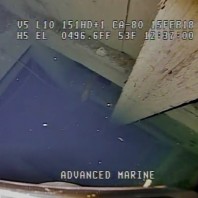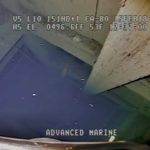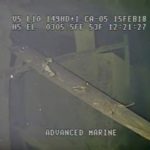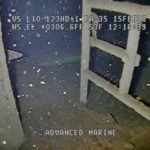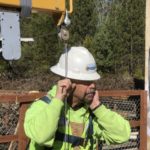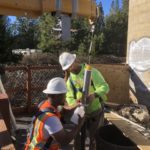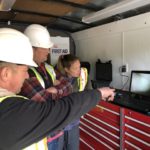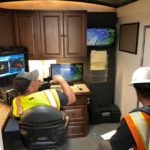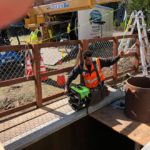In February, 2018, Rise Gold Corp. engaged Advanced Marine to conduct a preliminary inspection of the flooded New Brunswick Shaft of the Idaho-Maryland mine in Grass Valley, CA.
Advanced Marine used their Seabotix LBV-300-5 remote operated vehicle (“ROV”) to survey the shaft down to a depth of ~760 ft (232 m). The ROV filmed the timber work and center compartment of the shaft and entered the B580 level shaft station. The ROV survey confirmed that the New Brunswick Shaft remains open and the timber work and guides appear to be in good condition to the depth surveyed. In the course of this survey, Advanced Marine conducted water sampling in the shaft to 2300 ft (701 m) with a weight and winch cable. The shaft is confirmed to remain open to at least this depth.
Rise Gold Corp. believes it is likely the submerged timber work has been preserved. Decay, or rot, of wood by fungus requires the presence of oxygen. Recent field testing of water quality from the New Brunswick Shaft consistently demonstrate very low oxygen levels and strongly reducing conditions within the water. The reducing conditions and low oxygen levels indicate that wood mine timbers present below the water surface within the mine workings should not be susceptible to rotting.
The successful survey of the shaft allows the planning of future underwater inspections using an ROV capable of reaching the deepest levels of the shaft. Future ROV inspections could include the inspection of the shaft to the full depth of 3,400 ft, inspections of mine levels, and core testing of the wooden timber work to prove its structural strength for engineering studies.


